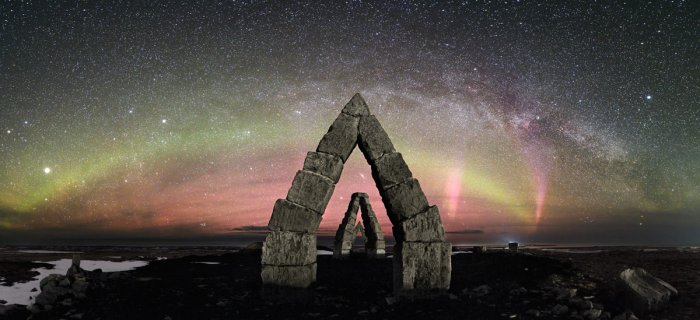Iceland Raises Pagan Temple And Revives Worship Of Norse Gods As Official Religion
– It’s an historic moment in the history of Iceland. The Vikings left the country a long time ago and people on Iceland converted to Christianity 973 years ago, but some traditions and beliefs are still alive. For the first time ever after 1,000 years, Iceland has officially recognized the worship of Norse Gods as a religion.
Placed on a hill a hill that overlooks Iceland’s capital, Reykjavik, the construction of the first Pagan temple dedicated to Norse Gods opens a new chapter in the religious history of Iceland. Odin, Thor, Freya, Idun and the other gods of the Norse pantheon are back again!

Modern version of Norse paganism has been gaining popularity in Iceland for quite some time and some building linked to Norse mythology have already been constructed. One of them is the magnificent, giant Arctic Henge that was deliberately raised to preserve Nordic roots.
It’s a huge sundial similar to Stonehenge and its purpose is to harness the Midnight Sun at the Arctic Circle. The Arctic Henge is inspired by the mythical world of Eddic poem Völuspá (Prophecy of the Seeress), taking from it the concept of 72 dwarves who represent the seasons in the world of the poem, among other symbolic queues.
Now, it’s time for the first pagan temple to see the first daylight 1,000 years after Christianity was introduced on Iceland.
Behind the project is Asatruarfelagid, an Icelandic organization headed by high-priest Hilmar Orn Hilmarsson. Asatruarfelagid promotes faith in the Norse gods. It was founded on the First Day of Summer, 1972, and granted recognition as a registered religious organization in 1973, allowing it to conduct legally binding ceremonies and collect a share of the church tax. Asatru is the name by which the Norsemen called their religion.
Membership in Asatruarfelagid has tripled in Iceland in the last decade to 2,400 members last year, out of a total population of 330,000, data from Statistics Iceland showed.
See also:Magnificent Arctic Henge And Its Giant Dwarf Path In Iceland
Its members have now raised enough money and received permission from the government to construct the first such temple.
Is the revived Norse religion a threat to Christianity? How will it be possible to combine these two faiths on the island? Have Christians misinterpreted old Norse beliefs? There are many questions that still remain unanswered, but the first speculations are already underway.
“I don’t believe anyone believes in a one-eyed man who is riding about on a horse with eight feet,” said Hilmar Orn Hilmarsson, high priest of ‘Asatruarfelagid’, an association that promotes faith in the Norse gods.
“We see the stories as poetic metaphors and a manifestation of the forces of nature and human psychology.”
The Norse temple will hold wedding ceremonies and funerals. The group will also confer names to children and initiate teenagers, similar to other religious communities.
Whether Asatruarfelagid will gain many more new members in the future remains to be seen, but this is without doubt a historical moment and a great achievement for all followers of Norse gods.



 Creators of mankind
Creators of mankind Description of “Tall white aliens”
Description of “Tall white aliens” Where they came from?
Where they came from? About hostile civilizations
About hostile civilizations The war for the Earth
The war for the Earth “Tall white aliens” about eternal life
“Tall white aliens” about eternal life Video: “Nordic aliens”
Video: “Nordic aliens” Aliens
Aliens Alien encounters
Alien encounters The aliens base
The aliens base UFO
UFO Technology UFO
Technology UFO Underground civilization
Underground civilization Ancient alien artifacts
Ancient alien artifacts Military and UFO
Military and UFO Mysteries and hypotheses
Mysteries and hypotheses Scientific facts
Scientific facts


















